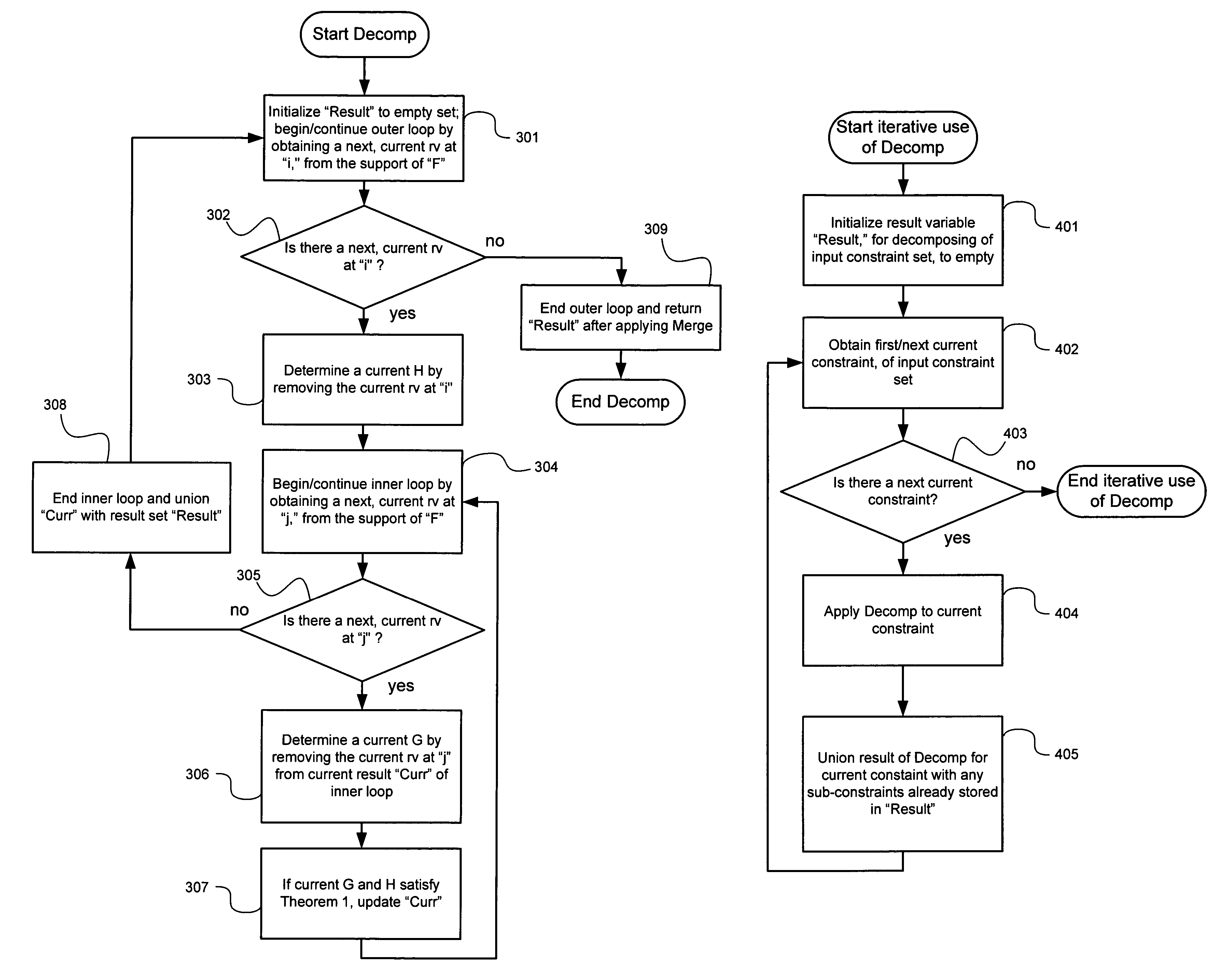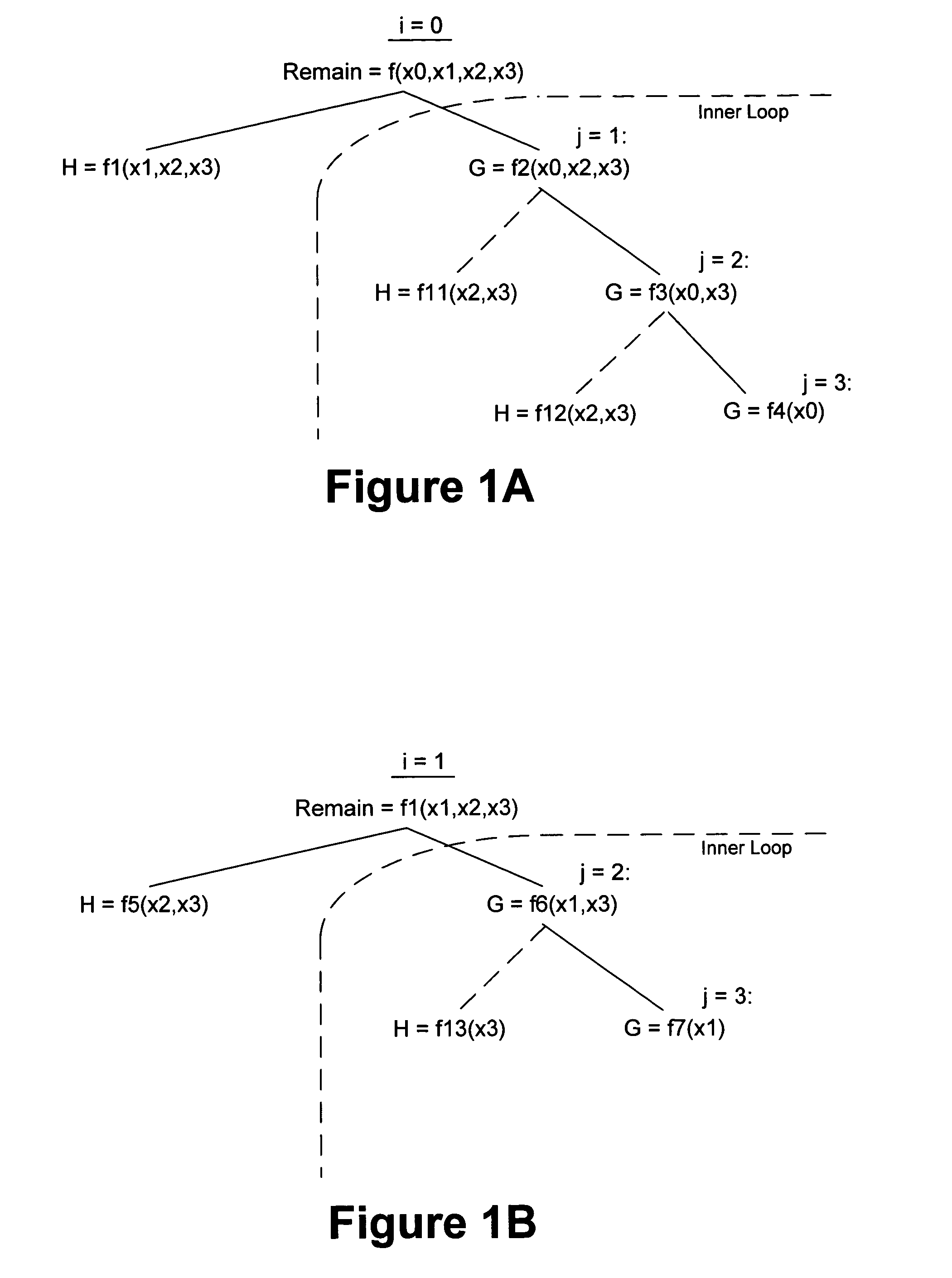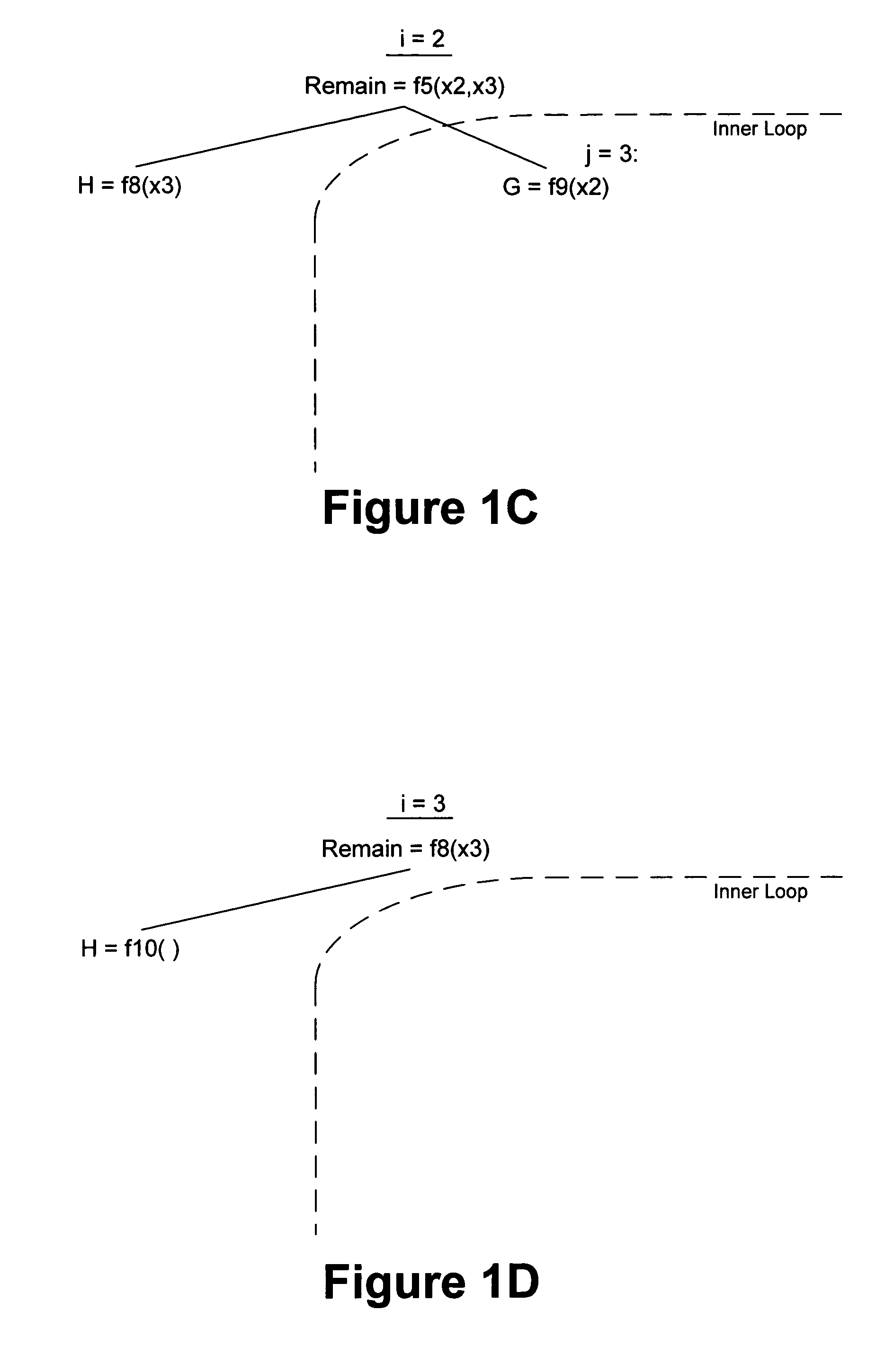Method and apparatus for solving constraints
a technology of constraints and methods, applied in the direction of cad circuit design, program control, instruments, etc., can solve the problem of complex assignment of variables to find the one that satisfies them
- Summary
- Abstract
- Description
- Claims
- Application Information
AI Technical Summary
Benefits of technology
Problems solved by technology
Method used
Image
Examples
example 1
[0056]
rand integer x0, x1, x2, x3;constraint c1 {0 == f(x0, x1, x2, x3);}
[0057]In the OpenVera language, c1 represents a block of constraints, in this case containing only one constraint. Variables “x0,”“x1,”“x2,” and “x3” are declared to be random variables of the integer data type. The constraint of block c1 is a declarative statement regarding a relationship that must be maintained between the random variables. The constraint states that random variables x0, x1, x2 and x3 are input to a function “f” whose output must be equal to zero. Rather than the right hand side of the constraint being an actual procedure call, to a procedure named “f,” the function “f” is being used to represent any four-variable expression that is permissible in the constraint language (which, in this Example, is OpenVera). The constraint solving problem comprises finding values for x0, x1, x2 and x3 such that the declarative statement of block c1 is satisfied. Within an OpenVera program, since OpenVera is ...
PUM
 Login to View More
Login to View More Abstract
Description
Claims
Application Information
 Login to View More
Login to View More - R&D
- Intellectual Property
- Life Sciences
- Materials
- Tech Scout
- Unparalleled Data Quality
- Higher Quality Content
- 60% Fewer Hallucinations
Browse by: Latest US Patents, China's latest patents, Technical Efficacy Thesaurus, Application Domain, Technology Topic, Popular Technical Reports.
© 2025 PatSnap. All rights reserved.Legal|Privacy policy|Modern Slavery Act Transparency Statement|Sitemap|About US| Contact US: help@patsnap.com



